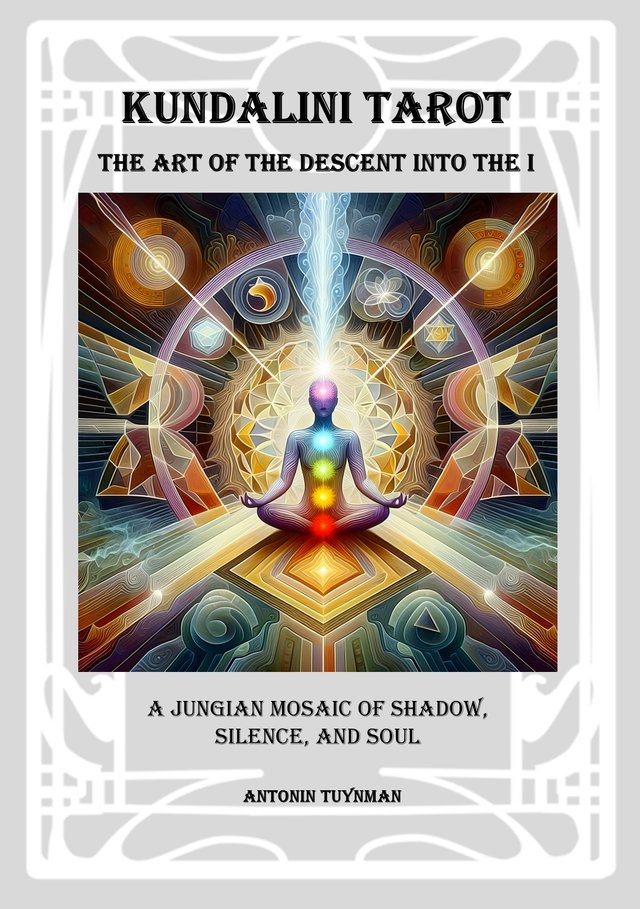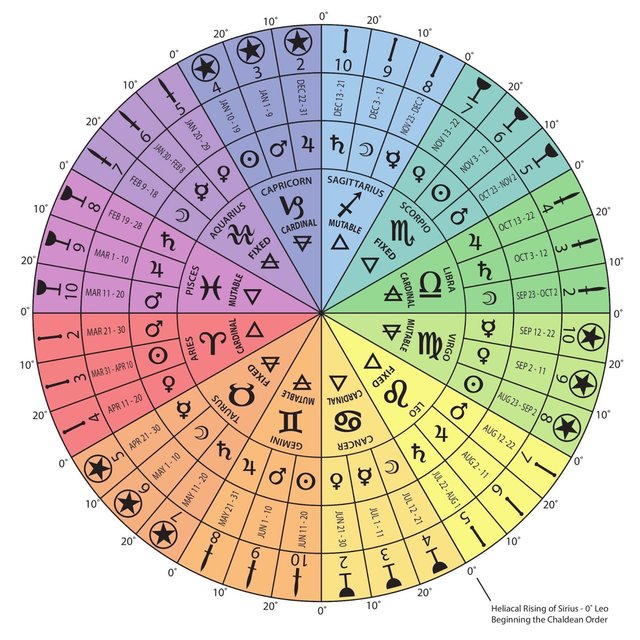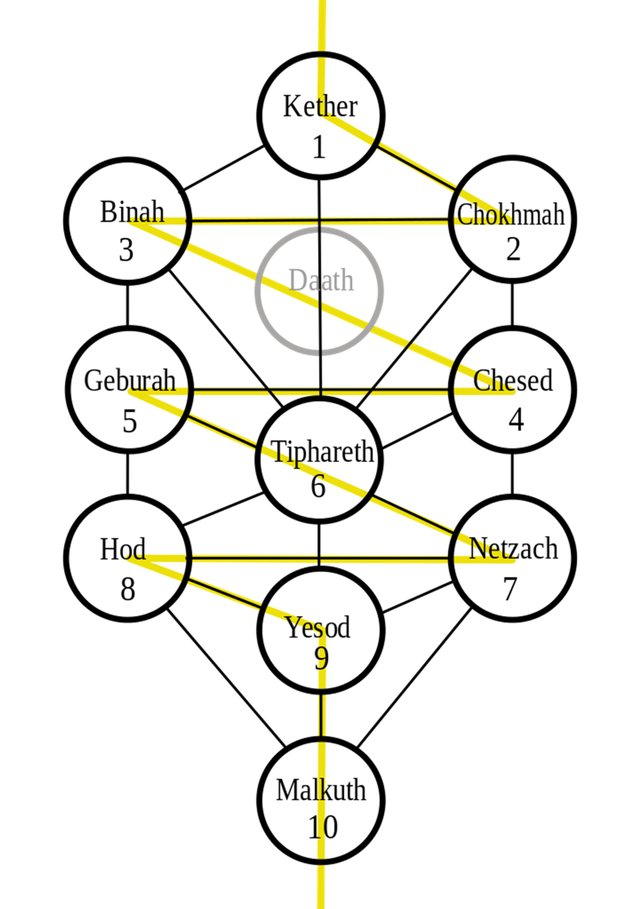The Tarot as a Mirror of the Soul - Introduction
Introductory Chapter of my upcoming book "The ART OF THE DESCENT INTO THE I - KUNDALINI TAROT"
The Tarot as a Mirror of the Soul
There is a quiet intelligence woven through the fabric of life - subtle, symbolic, often dismissed as coincidence. But for those who listen, the world begins to speak. The rustle of events, the ripple of emotion, the uncanny timing of symbols - all echo back something deeply personal, something profound. This is the hidden language of synchronicity, and the Tarot is one of its most eloquent dialects.
Tarot, for all its mysterious allure and esoteric symbolism, is too often buried beneath a mountain of fragmented lore. Many books treat it as a chaotic accumulation of meanings, as if each card were an island, unmoored from a greater landmass. But the Tarot is not a disjointed collection of symbols - it is a map. And not just any map, but a map of mind and emotion, a topography of the psyche as it winds through pain, insight, illusion, and revelation. It is a tool for those willing to embark on the most treacherous and rewarding journey: self-discovery.
At its heart, this book is a call to reclaim the Tarot as a psychological compass. Rooted in the insights of Carl Jung, we will explore how the external world often acts as a mirror to the internal one. The events of our lives - particularly the painful, bewildering, and absurd - are not meaningless. They are messengers. They point toward the repressed, the disowned, the hidden: what Jung called the shadow. The Tarot, when used with care and clarity, reveals these shadows not as enemies, but as invitations. Each card becomes a threshold to integration, each spread a constellation of possibility and transformation.
I will center my work around the Celtic Cross - the classic spread whose very shape invites both linear storytelling and crosswise introspection. Like a mirror held at two angles, it reflects not only what is, but what is becoming. This spread becomes a sacred geometry of the psyche, where position is as important as symbolism, and context unlocks deeper truths.
Beyond the spread, we will follow the arc of the Tarot as a journey - not merely of the Fool, but of consciousness itself. From the flicker of the photon to the flowering of the universe, the cards trace a secret history of being. This journey is not only cosmic, but intimate. It mirrors the mystic path spoken of in Advaita Vedanta: the realization that the self we seek is the very ground of being we thought we had lost. The drop in the ocean discovers it was never separate; the ocean itself had always been flowing through it.
This is not a fortune-telling manual. It is not a dogmatic system of right answers. It is a lantern for those navigating the wilderness of the self. In these pages, you will not be told what to believe - but you may be shown how to see. The Tarot is not magic because it predicts the future. It is magic because it collapses the boundary between inner and outer, between psyche and cosmos. It reveals that every card pulled is a conversation with the Self, and every question asked is a prayer to be seen more fully. If you are ready to listen, then the deck is already speaking.
In the spring of 2025, while immersed in The Red Book by Carl Gustav Jung - a descent into the mythic depths of the psyche - I found my dormant fascination with the Tarot rekindled, no longer as a fortune-teller’s plaything, but as a luminous tool for psychological self-discovery. At the same time, I had begun exploring the generative capacities of AI art, creating images using DALL-E 3 through Bing and experimenting with the visual alchemy of the NightCafé platform. This digital crucible became the womb of a new Tarot deck - one that wove the esoteric symbolism of Crowley’s Thoth deck into the dreamlike visionary aesthetic of Jung’s Liber Novus, infused with stylistic echoes of Art Nouveau, Art Deco, and mosaic iconography. What emerged was a full reimagining of the Thoth Tarot, framed in my own Art Nouveau borderwork, and expanded to include two additional archetypes: Caduceus (∞), a pre-incarnational card symbolizing originless potential, and Kundalini (XXII), the energetic process culminating in the final dissolution into unified being - neither of which is to be used in traditional Celtic Cross readings. In the pages that follow, I describe the symbolic elements of each card as originally presented in Aleister Crowley’s Thoth Tarot deck, even if my own images diverge stylistically or omit certain motifs. To resolve any confusion between the described symbolism and the card art shown, I invite the reader to consult the corresponding Thoth imagery online - for instance, through the invaluable resource at esotericmeanings.com. It is from this site that I drew much of the interpretive structure for this work, complemented by insights gleaned from the official booklets accompanying both the Thoth and Rider-Waite decks. This synthesis of tradition and reinvention forms the foundation of the deck you now hold - a mirror of the soul, refracted through the prism of art, myth, and the eternal search for meaning.
This Kundalini Tarot thus arises as a sacred evolution of Aleister Crowley’s Thoth deck, enriched by the addition of two profound cards beyond the traditional arcana: the Caduceus (∞) and the Kundalini (XXII). The Caduceus speaks to the soul’s originless potential, the infinite wellspring before incarnation, reminding us that every life is a narrowing of the boundless into form - and that ultimately, the ocean of divinity dwells also within the single drop. The Kundalini card embodies the awakening of the primal serpent-energy at the base of the spine, marking the true beginning of the soul’s ascent back to unity. Yet this ascent is fraught with blockades - material, mental, emotional, and energetic - that bind the spirit and obscure its path. Together, these cards guide us to recognize and transcend the inner dualities and conflicts that hinder our reunion with the divine light within. This deck is thus designed not merely as a tool for divination but as a mirror and map for the sacred journey of awakening and integration.
In the first chapter, we will begin by carefully unfolding the structure of the Celtic Cross spread - our primary lens throughout this book. Each position in this ten-card spread serves a unique function: some reveal the immediate situation, others the underlying drives, past influences, future potentials, inner attitudes, and external dynamics. It is a cross not only in shape but in symbolic weight - where vertical lines represent the axis of self and spirit, and horizontal lines reflect our engagement with the world. We will also explain how each Tarot card may appear either right side up or reversed, the latter often indicating a blockage, inversion, or latent potential of the card’s usual meaning. Once the framework is clear, we will proceed through the deck systematically.
We begin with the Minor Arcana, which detail the landscape of everyday experience and inner development. First, the Wands, associated with the element of Fire, reflect our energy, drive, willpower, and creativity. Next, the Cups, aligned with Water, reveal the ebb and flow of our emotions, desires, and relationships. The Swords, linked to Air, chart the domain of thought, clarity, decision, and conflict. The Pentacles, grounded in Earth, speak to our material life - health, finances, work, and tangible stability. After the Minor Arcana, we will turn to the Major Arcana - the great arc of the soul’s journey. These 22 cards are aligned with the fifth element, Ether - the unseen, spiritual dimension that transcends yet includes the other four. The Major Arcana trace the mythic unfolding of consciousness, a journey from innocence to integration, culminating in the realization that the Atman - the individual soul - is, and always has been, Brahman, the universal Self.
Figure 1: Decan Wheel
Each of the minor arcana cards from Two to Ten corresponds to a specific decan (see Figure 1), a ten-degree segment of the zodiac that divides the 360° of the astrological year into 36 equal parts. These decans not only link each card to a particular astrological season - with its distinct mood and archetypal energy - but also enrich the interpretation of the card by situating it within cosmic time. The suit of Wands corresponds to Fire signs (Aries, Leo, Sagittarius), Cups to Water signs (Cancer, Scorpio, Pisces), Swords to Air signs (Libra, Aquarius, Gemini), and Disks to Earth signs (Capricorn, Taurus, Virgo). Each suit thus maps across three zodiac signs, with three cards per sign (covering 0°–10°, 10°–20°, and 20°–30°). Figure 1 shows this arrangement visually, with the inner circle displaying the zodiac wheel and the outer ring marking the tarot pip cards and their corresponding dates throughout the year.
The Kabbalah’s Tree of Life (see Figure 2) also serves as a profound symbolic framework underlying much of Western esoteric tradition, and it provides a useful lens for understanding the deeper energetic, emotional, and psychological layers within the Tarot. The Tree consists of ten Sephiroth- divine emanations- each representing a unique aspect of existence and consciousness: Keter (Crown) embodies pure divine energy and unity; Chokhmah (Wisdom) is dynamic creative force; Binah (Understanding) grounds this into form and structure; Chesed (Mercy) expresses expansive love and benevolence; Gevurah (Severity) represents strength, discipline, and boundaries; Tiferet (Beauty) harmonizes mercy and severity, manifesting compassion and balance; Netzach (Victory) relates to endurance and desire; Hod (Glory) reflects intellect, communication, and humility; Yesod (Foundation) channels the subconscious and the flow of vital energy; and Malkuth (Kingdom) grounds all energies into physical reality. Each Sephirah corresponds not only to a spiritual or mental state but also to particular emotional energies and material manifestations.
Aleister Crowley’s esoteric expansion of the Tree notably includes Daath, the hidden “Abyss,” symbolizing the threshold between the manifest and the unmanifest, the mysterious gateway where knowledge and ignorance converge. Crowley famously linked the 22 paths between the Sephiroth to the 22 Major Arcana cards of the Tarot, creating a direct map that integrates the Tarot’s archetypal journey with the structure of the Tree. This synthesis offers a powerful model for tracing the ascent of Kundalini energy, which in many ways parallels the Tree’s upward flow - from the grounding force of Malkuth, through the purification and transformation of Yesod and beyond - culminating in the unitive state of Keter. Kundalini’s rising through the chakras resonates with the Tree’s sephiroth as stages of energetic awakening, psychological refinement, and spiritual illumination.
Figure 2: The Kabbalah’s Tree of Life
While this book references the Kabbalah at various points to illuminate the Tarot’s depth, it is not a systematic guide to Kabbalah itself. For readers interested in a deeper exploration of the Kabbalistic Tarot system, especially Crowley’s pioneering work weaving these traditions together, I recommend studying The Book of Thoth by Aleister Crowley and other dedicated Kabbalah-Tarot texts. Here, the emphasis remains on the practical and experiential aspects of the Tarot as a tool for guiding Kundalini awakening and personal transformation.
Sometimes, as we navigate the rich symbolic landscape of the Tarot, it can be helpful to map our feelings onto a more structured framework - such as Plutchik’s Wheel of Emotions. Developed by psychologist Robert Plutchik, this wheel organizes eight primary emotions - joy, trust, fear, surprise, sadness, disgust, anger, and anticipation - along with their varying intensities and combinations. This colorful emotional map offers us a compass to identify and understand the subtle shades and shifts in our inner world. By connecting Tarot’s archetypal imagery with the nuanced spectrum of human emotions, we deepen our self-awareness and gain clarity on the emotional currents shaping our journey. In this way, Plutchik’s wheel becomes a bridge between the intuitive wisdom of the cards and the language of our heart, guiding us toward a more integrated and compassionate understanding of ourselves Please note that I’ve sprinkled correspondences to Plutchik’s wheel here and there - especially within the suit of Swords - to help map the shifting mental states onto the landscape of emotions, though not always in a strict or consistent way.
When you decide to practice divinatory Tarot with the present deck, you implicitly acknowledge that events are not merely random - that there is a hidden coherence weaving together the inner world of the querent and the outer signs that appear. The cards drawn in a reading reflect this connection. Yet since we cannot know what subtle channels or entities may be at work in bringing insight, it is wise to frame each reading with a simple ritual of protection and closure.
Begin by setting an intention: ask that the reading bring only clarity and guidance for the highest good. Then, establish a boundary: prepare a calm space, perhaps lighting a candle or imagining a sphere of light around yourself and the cards. Take a moment to ground: feel your feet on the floor, breathe deeply, and return to your body. Above all, maintain neutrality: let the cards speak without your own worries or expectations clouding them. Once the reading is complete, apply a seal of closure. This can be as simple as thanking the cards, wrapping the deck, or offering a short phrase of release: “These are the messages for today; may they bring light on your path.” In doing so, you ensure three things: the energetic channel is closed, the querent feels a sense of completion, and the reading is not burdened by lingering tension. Protection opens the space; the seal closes it. Together, they keep the Tarot a safe and sacred practice.
Soon I will publish the entire book of which this is the introductory chapter. If you are interested in getting a copy of the book check on https://www.lulu.com/spotlight/awwwareathotmaildotnl to see if the book has already been published. You can also write me a DM by reacting to this post if you are interested in getting a hardcopy of the book or the corresponding Tarot deck.
Antonin Tuynman


